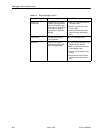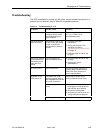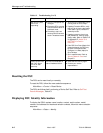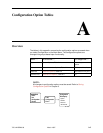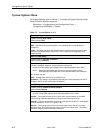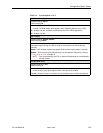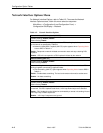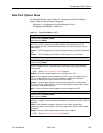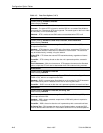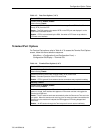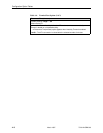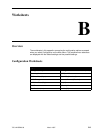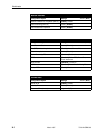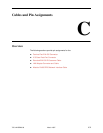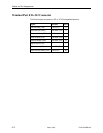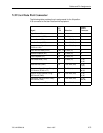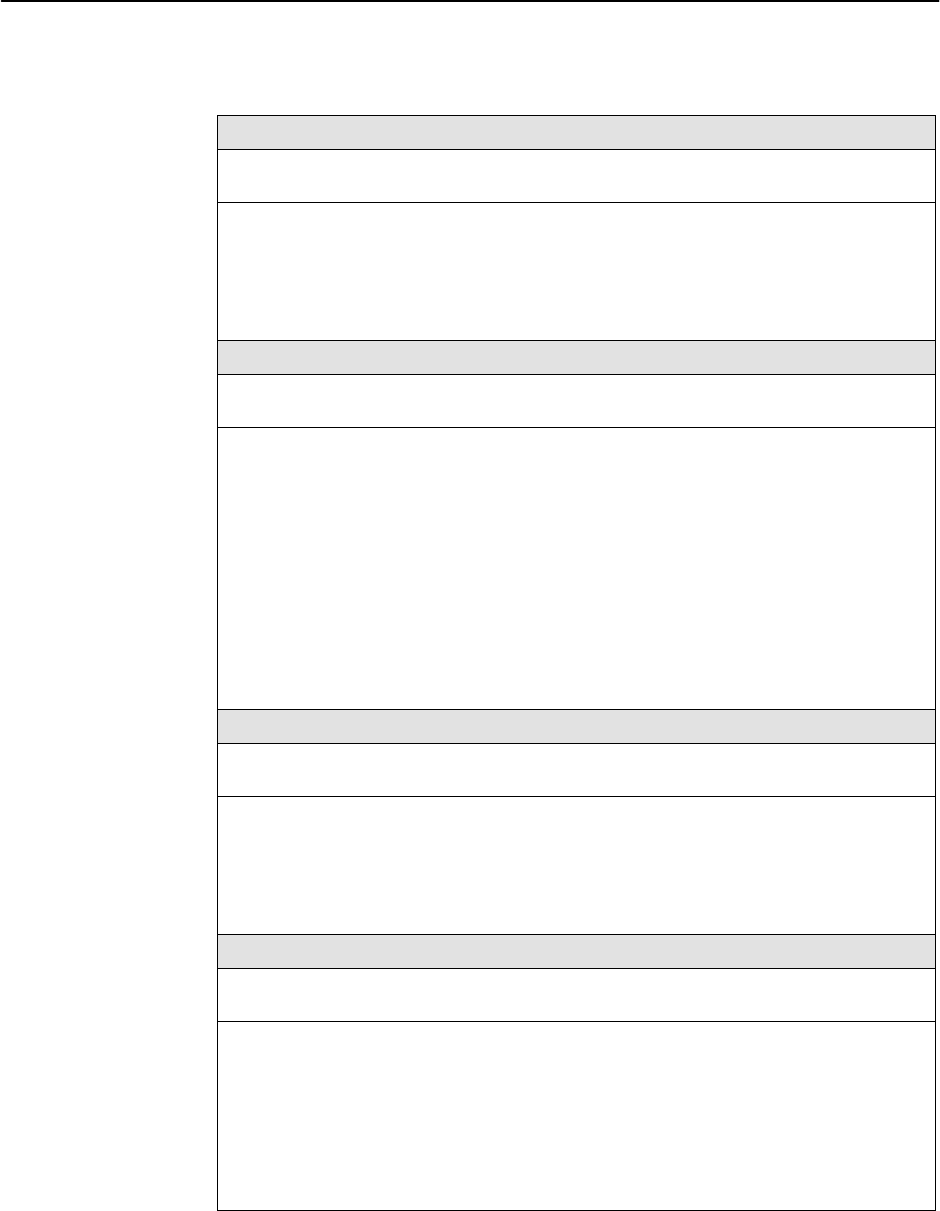
Configuration Option Tables
A-6
7510-A2-GB20-00March 1997
Table A-3. Data Port Options (2 of 3)
Carrier Control by RTS
Possible Settings: Constant, Switched
Default Setting: Constant
Simulates Constant or Switched Carrier operation.
Constant – The internal RTS is forced on and the DSU is in a constant Data Mode on
the transmit line. The external RTS lead is ignored. The actual signal on the line is either
all ones (DMI) or DTE transmitted data.
Switched – RTS is monitored and CMI codes are transmitted when RTS is off.
CTS Control
Possible Settings: Standard, Follow RTS, Forced On, Circuit Assurance
Default Setting: Standard
Specifies the operation of the Interchange Circuit CT106, Clear to Send (CTS), which is
an output from the DSU.
Standard – CTS follows the internal RTS with a fixed delay, except that CTS will be off
when a network interface related alarm is detected or a test is active. The active test
may be initiated locally, remotely, or by the network.
Follow RTS – CTS follows the external RTS lead without delay, regardless of alarms
and tests.
Forced On – CTS is always forced on after the unit is powered up with a successful
self-test.
Circuit Assurance – With circuit assurance, CTS operates the same as the Standard
option, except that CTS will also be deasserted when CMI codes are being received.
RLSD Control
Possible Settings: Standard, Forced On
Default Setting: Standard
Specifies the operation of the Interchange Circuit CT109, Received Line Signal Detector
(RLSD or CD), which is an output from the DSU.
Standard – RLSD is asserted when Data Mode is on the receive line. RLSD deasserts
when a DDS facility alarm is detected or the DSU is receiving CMI codes.
Forced On – RLSD is forced on after the unit is powered up with a successful self-test.
DSR Control
Possible Settings: Standard, Forced On, On During Test
Default Setting: Standard
Specifies the operation of the Interchange Circuit CT107, Data Set Ready (DSR), which
is an output from the DSU.
Standard – DSR is always asserted, except when a DDS facility alarm is reported or
the DSU is in Test mode.
Forced On – DSR is forced on after the unit is powered up with a successful self-test.
On During Test – DSU operates the same as the Standard option, except that DSR
remains asserted when the DSU is in Test mode to allow the DTE to send test patterns.



